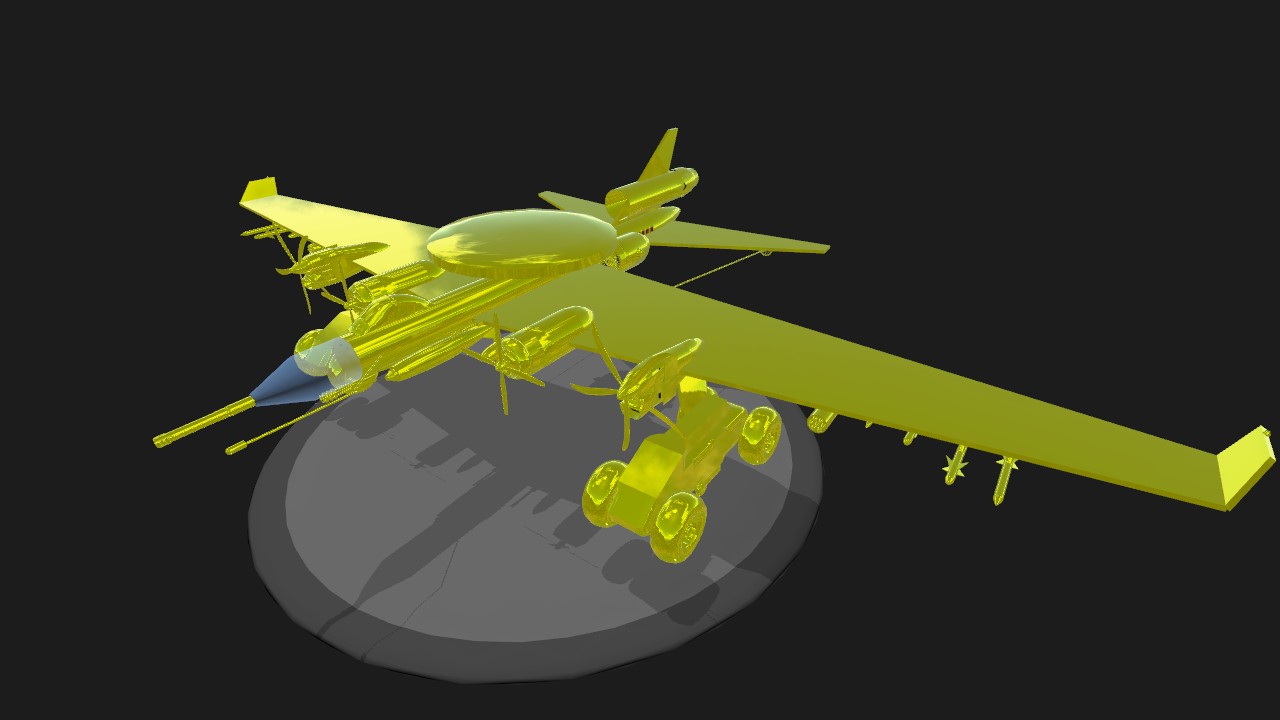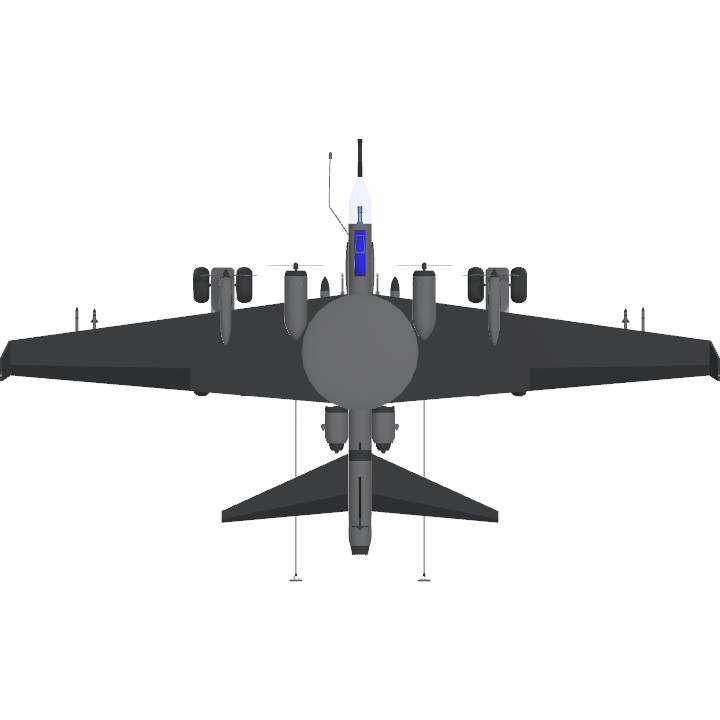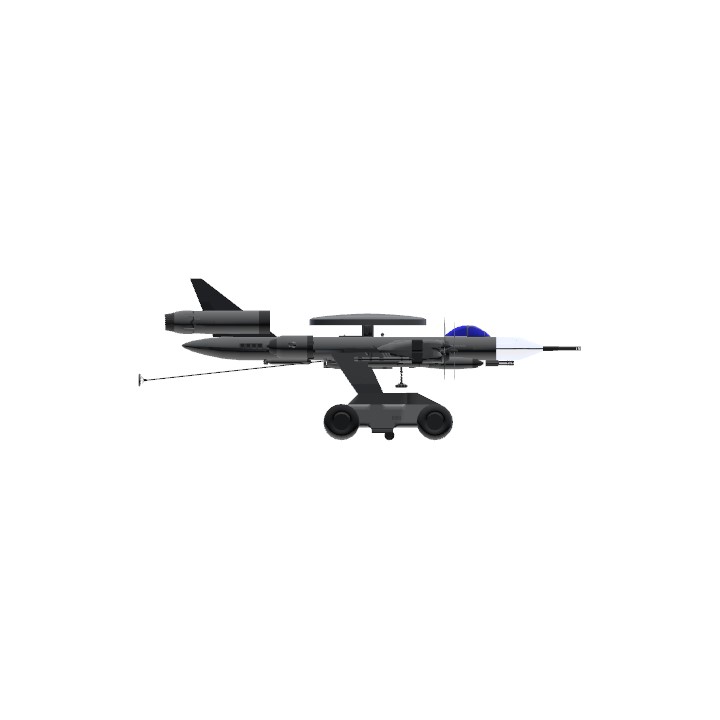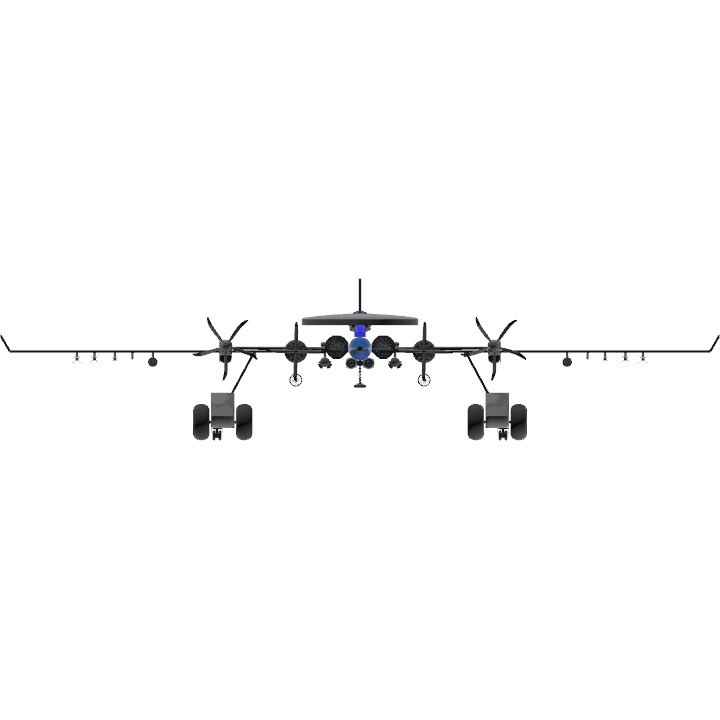Specifications
Spotlights
- LunarEclipseSP 2.2 years ago
General Characteristics
- Successors 1 airplane(s)
- Created On Windows
- Wingspan 101.2ft (30.8m)
- Length 62.1ft (18.9m)
- Height 22.6ft (6.9m)
- Empty Weight 20,384lbs (9,246kg)
- Loaded Weight 33,412lbs (15,155kg)
Performance
- Power/Weight Ratio 2.623
- Horse Power/Weight Ratio 0.299
- Wing Loading 26.0lbs/ft2 (127.0kg/m2)
- Wing Area 1,284.3ft2 (119.3m2)
- Drag Points 12257
Parts
- Number of Parts 236
- Control Surfaces 5
- Performance Cost 1,403





@Majakalona same here
@50CalChicken neither do I
I only Got 3 hours of sleep today
@Majakalona of which I get very little of
@SomeSPGuyWhoLikesLore I think I know what you mean
@Brionne Oh, well uhhhh. Let me Google translate it
“十大最大飞机”缩略图中的那些点击诱饵飞机:
抱歉,如果这有点粗糙,我正在使用谷歌翻译哈哈
@SomeSPGuyWhoLikesLore 什么意思,我看不懂
Clickbait airplane in "Top 10 biggest airplane" thumbnail:
Sleep is a state of reduced mental and physical activity in which consciousness is altered and sensory activity is inhibited to a certain extent. During sleep, there is a decrease in muscle activity, and interactions with the surrounding environment. While sleep differs from wakefulness in terms of the ability to react to stimuli, it still involves active brain patterns, making it more reactive than a coma or disorders of consciousness.[1]
Sleep occurs in repeating periods, during which the body alternates between two distinct modes: REM and non-REM sleep. Although REM stands for "rapid eye movement", this mode of sleep has many other aspects, including virtual paralysis of the body. [2] Dreams are a succession of images, ideas, emotions, and sensations that usually occur involuntarily in the mind during certain stages of sleep.
During sleep, most of the body's systems are in an anabolic state, helping to restore the immune, nervous, skeletal, and muscular systems;[3] these are vital processes that maintain mood, memory, and cognitive function, and play a large role in the function of the endocrine and immune systems.[4] The internal circadian clock promotes sleep daily at night. The diverse purposes and mechanisms of sleep are the subject of substantial ongoing research.[5] Sleep is a highly conserved behavior across animal evolution,[6] likely going back hundreds of millions of years.[7]
Humans may suffer from various sleep disorders, including dyssomnias such as insomnia, hypersomnia, narcolepsy, and sleep apnea; parasomnias such as sleepwalking and rapid eye movement sleep behavior disorder; bruxism; and circadian rhythm sleep disorders. The use of artificial light has substantially altered humanity's sleep patterns.[8] Common sources of artificial light include outdoor lighting and the screens of electronic devices such as smartphones and televisions, which emit large amounts of blue light, a form of light typically associated with daytime. This disrupts the release of the hormone melatonin needed to regulate the sleep-cycle.[9]
.
Unless your in Asia or Europe this counts